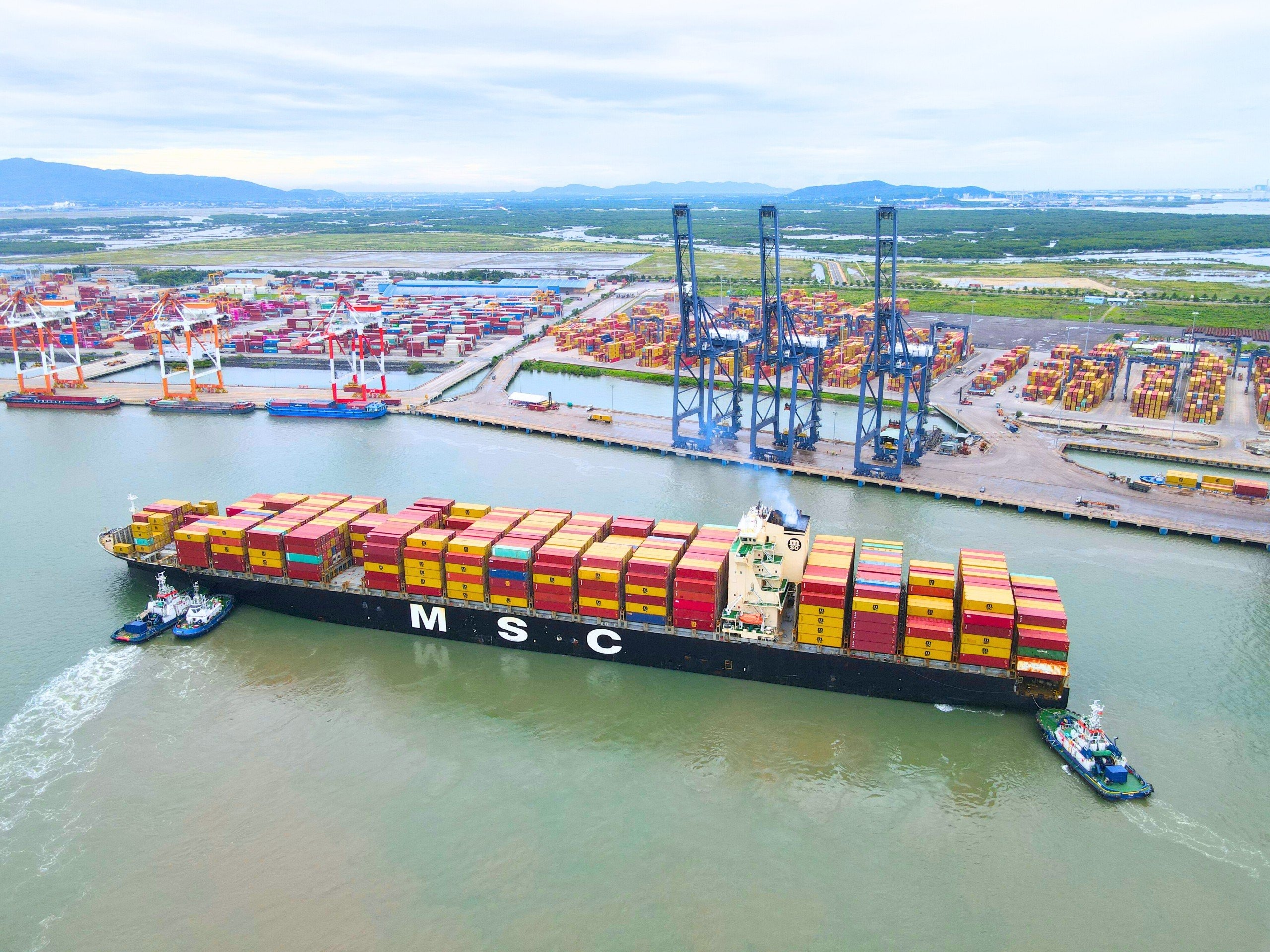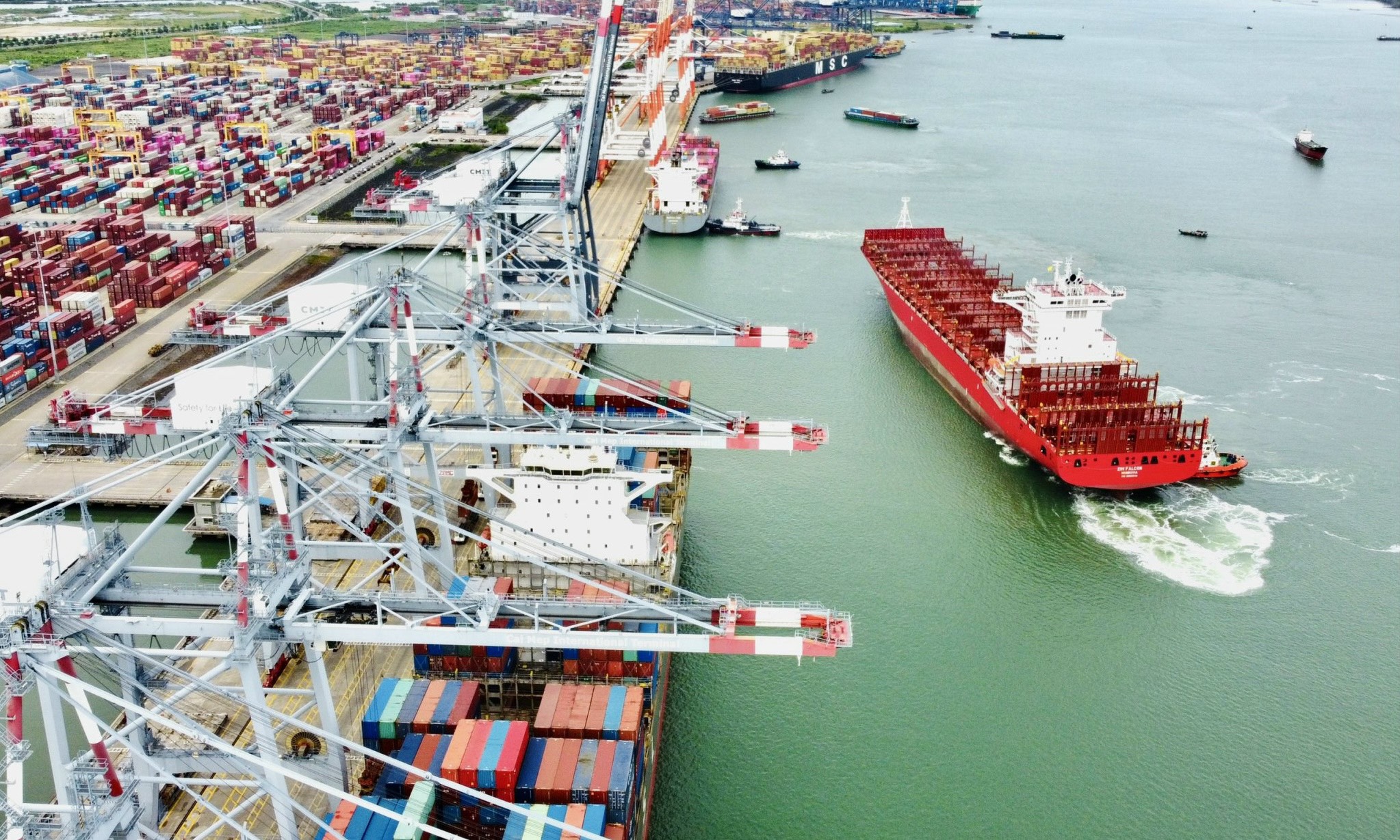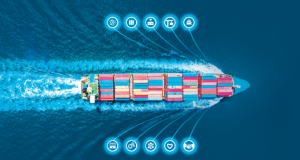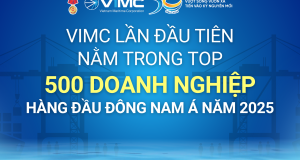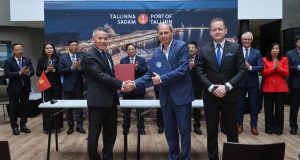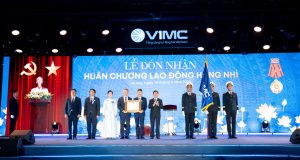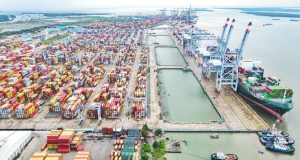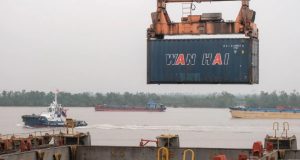After various setbacks, joint venture seaports in Vietnam came out of the shadows in the first half of 2024, but many still worry about prolonged challenges.
SSIT, a joint venture between Vietnam Maritime Corporation (VIMC) and SSA Marine from the US, welcomed container ship MSC Vigour III on July 23 as part of a new intra-Asia service line called the Saola line, operated by Switzerland-headquartered Mediterranean Shipping Company (MSC).
The container ship is now one of three ships operating on the route, directly connecting goods from Vietnam to China. The Saola line is a separate route with a competitive advantage in transit time, expected to meet the growing needs of the Asian market and bring significant benefits to customers worldwide.
Some adaption efforts paying off at seaports
“SSIT will continuously provide world-class services to MSC and other shipping lines and customers handling goods at the port. SSIT is one of the largest deep-water seaports in the country, making an important contribution to the development of the Cai Mep seaport system in particular and Vietnam in general,” said general director Robert Hildebrand.
The joint venture receives ships on six service lines, including one to the US, one to Europe, and four to inner Asia. Founded in 2006, it aims to accommodate large container ships with a tonnage of up to 200,000DWT and is equipped with modern equipment, including the largest shore cranes in Vietnam.
SSIT saw improvements in its first-half performance. Specifically, the seaport’s throughput reached over one million tonnes, meeting 58.6 per cent of the annual target and increasing over 29 per cent on-year. Of the volume, container throughput hit more than 300,000TEUs, achieving 82 per cent of the annual target and a 26 per cent on-year rise.
In the past, the venture often reported poor performance in container throughput and revenues as it failed to welcome large vessels and was affected by market difficulties. For example, in the first half of 2022, it reported poor performance in the total volume of goods and commodities, container throughput, and revenues, with respective on-year drops of 13, 18.7, and 11.7 per cent.
The bright picture is also evident for other joint venture seaports during the reviewed period. Cai Mep International Terminal (CMIT), which has Denmark’s APM Terminals as a foreign stakeholder (49 per cent stake), witnessed container throughput rise 41 per cent on-year to more than 700,000TEUs, meeting 59.7 per cent of the annual target.
Founded in 2006 and located in the Cai Mep-Thi Vai seaport area in the southern province of Ba Ria-Vung Tau, CMIT is equipped with modern equipment, including shore cranes for loading and unloading goods.
In May, CMIT and Tan Cang-Cai Mep Thi Vai Terminal (TCTT) agreed to connect, forming a seamless wharf 1,200 metres long capable of receiving three motherline ships simultaneously. The event helps create a longer wharf scale and smooth cargo connection, contributing to the goal of developing an international transshipment port at Cai Mep-Thi Vai. This breakthrough cooperation model between ports opens up many opportunities and development potential, optimising added value for customers and shipping lines, and enhancing the reputation, capacity, and service quality of local ports.
Every week, the seaports receive 14 international ships, including eight docking at TCTT and six at CMIT.
Similarly, SP-PSA, a joint venture involving Saigon Port and Singapore-based PSA, located in the Cai Mep-Thi Vai area, reported throughput of more than 2.5 million tonnes in the January-June span, fulfilling 58.3 per cent of the annual plan and rising 23 per cent on-year.
The business results of the joint ventures indicate that the financial index reflecting earnings before interest, taxes, depreciation, and amortisation is quite positive. For example, the earnings figure for SSIT in the first half of 2024 reached 56.7 per cent of the 2024 plan, equal to 82.5 per cent of the same period in 2023.
Meanwhile, CMIT reached 66.3 per cent of the year plan, an increase of 106 per cent on-year. And SP-PSA hit 46.4 per cent of the 2024 plan, an increase of 30 per cent on-year. Transport expert Ngo Nguyen explained, “Their positive business results partly reflect their efforts in recent times. It is expected that going forward, the market will stabilise, goods will grow again, and the joint venture seaports will transform and develop into a new level, together becoming leading providers of seaport service quality in the area.”
According to VIMC, despite better performance in the first half, it is forecast that the shipping market situation, including container transportation and bulk cargo ships, in 2024 will not have many positive changes.
Container shipping rates fluctuated and declined throughout most of 2023 and have shown no signs of stabilisation. In the context of low growth in transport demand, the number of newly built ships is increasing rapidly, and congestion is decreasing, the market will see an excess supply of ships.
Nguyen Canh Tinh, CEO of VIMC, said, “In 2024, the shipping market will continue to face many difficulties from the continued escalation of wars and tensions in many areas, the drought situation at the Panama Canal, challenges at the Red Sea, and the Suez Canal affecting the operations of shipping lines, possibly leading to disruption of the global supply chain.”
In addition, the supply of ships is expected to grow strongly as shipping lines have begun to receive new ships after years of waiting for construction, Tinh said. “Meanwhile, the local market faces an increasingly ageing fleet with poor and inconsistent technical features. And the fleet is increasingly shrinking due to the restructuring process, as well as problems in regulations on investment procedures, and increasing pressure from the private sector,” he added.
VIMC worries that the trend of increasing ship sizes, especially for ships going to Europe (the largest ship size exceeds 24,000TEUs), can lead to loss of opportunities for VIMC’s ports. With that, seaports continue to strengthen their cooperation and improve their service to adapt and grow. In particular, on July 17, CMIT welcomed Zim Falcon, the first vessel on the ZIM eCommerce Xpress service to the US West Coast.
ZIM, the world’s ninth-largest shipping line and with a total fleet capacity of over 722,000TEUs, provides a diverse service network for customers from Cai Mep to international markets. Therefore, partnering with ZIM will enable CMIT to increase its competitive edge.
Also in July, SSIT successfully welcomed MSC Tokyo, MSC’s first-ever direct European service in Vietnam, named Britannia.

